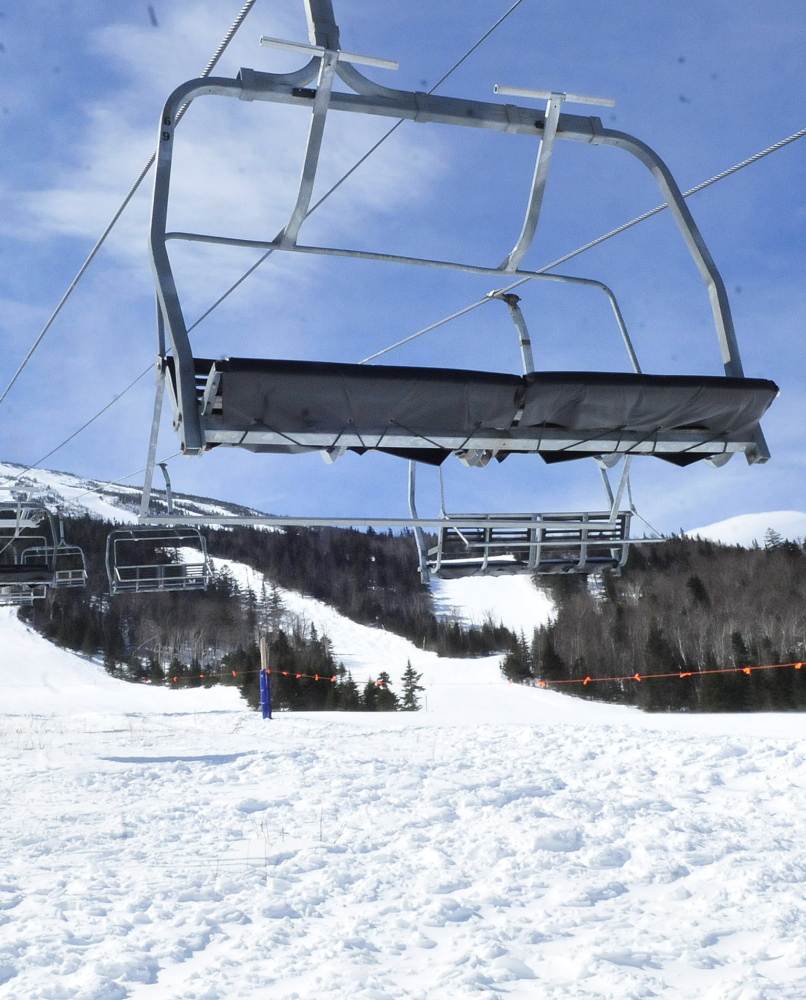Sugarloaf Mountain’s King Pine chairlift, which malfunctioned last weekend leading to seven injuries, might never carry skiers there again.
Even before the mechanical breakdown that caused the loaded lift to slide backward for 460 feet, King Pine was at the top of the resort’s list to be replaced, in its 10-year improvement plan.
John Diller, outgoing general manager for Sugarloaf Mountain Resort in Carrabassett Valley, said at the annual meeting in October that the operators would like to replace the lift, installed in 1988, and change its orientation to improve snowmaking and better shelter it from the wind.
The decision to do so, however, could be held up by the sale of Sugarloaf and other properties belonging to CNL Lifestyle Properties, a real estate investment trust.
Sugarloaf is leased and operated by Boyne Resorts, and the sale shouldn’t affect its operation, but Diller said major investments, like a $3 million lift, won’t happen until the sale concludes.
“Until we get that nailed down, big projects like a lift are going to be on hold,” he said. “Hopefully, we’ll get it nailed down before next summer.”
CNL Lifestyle Properties owns 16 resorts including Sunday River and Sugarloaf in Maine, Bretton Woods, Loon Mountain and Mount Sunapee in New Hampshire, Okemo Mountain in Vermont, Crested Butte in Colorado, Brighton in Utah, and Sierra-at-Tahoe in California.
Sugarloaf spokesman Ethan Austin said the recent malfunction is likely to weigh on that decision.
“There’s no question it would have a bearing on replacement of the lift. Does it get replaced immediately? I don’t know. It’s probably too early to say.”
King Pine was scheduled to run only on weekends starting next month, and there is little of the ski season remaining, so it will not be repaired and run again this year, Austin said earlier this week.
When the King Pine lift is replaced, the mountain plans to locate the base farther down the mountain and move the towers so it rises vertically instead of diagonally across the mountain.
That would make it less affected by the wind, so it would not have to be shut down as frequently in high winds, which has been particularly problematic for that lift.
It also would make it easier for snowmaking operations, Diller said last fall.
Last Saturday, a drive shaft between the motor and the bullwheel that hauls the lift’s steel cable broke in such a way that two braking systems failed and an emergency braking system also failed to engage.
The lift was stopped by another emergency brake but not before frightened skiers jumped from chairs as the lift rolled backwards.
Send questions/comments to the editors.



Comments are no longer available on this story